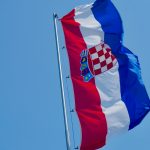ZAGREB, January 23, 2020 – Croatia increased the share of renewable energy in gross final energy consumption in 2018, joining the group of European Union member states that have surpassed their national 2020 binding targets, according to a report by the EU statistical office, Eurostat, released on Thursday.
In 2018, the share of energy from renewable sources in gross final energy consumption reached 18.0% in the European Union, up from 17.5% in 2017 and more than double the share in 2004 (8.5%), the first year for which the data are available, Eurostat said.
The increase in the share of renewables is essential to reach the EU climate and energy goals. The EU’s target is to reach 20% of its energy from renewable sources by 2020 and at least 32% by 2030.
Renewable energy sources include solar thermal and photovoltaic energy, hydro (including tide, wave and ocean energy), wind, geothermal energy and all forms of biomass (including biological waste and liquid biofuels), according to Eurostat.
Of the 28 EU member states, 12 have already reached a share equal to or above their national 2020 binding targets: Bulgaria, Czechia, Denmark, Estonia, Greece, Croatia, Italy, Latvia, Lithuania, Cyprus, Finland and Sweden.
In Croatia, the share of energy from renewable sources in gross final consumption reached 28% in 2018, increasing by 0.7 percentage points (pp) from 2017 and exceeding the 2020 target by 8 pp. In 2004 it stood at 23.4%.
Four member states are close to meet their targets (i.e. less than 1 pp away), nine are between 1 and 4 pp away, while three are 4 or more pp away from their targets.
In 2018, the share of renewable sources in gross final energy consumption increased in 21 of the 28 member states compared with 2017, while remaining stable in one member state and decreasing in six. Since 2004, it has significantly grown in all member states.
Sweden had by far the highest share in 2018 with more than half (54.6%) of its energy coming from renewable sources, ahead of Finland (41.2%), Latvia (40.3%), Denmark (36.1%) and Austria (33.4%).
At the opposite end of the scale, the lowest proportion of renewables was registered in the Netherlands (7.4%). Low shares, less than ten percent, were also recorded in Malta (8.0%), Luxembourg (9.1%) and Belgium (9.4%).
Each EU member state has its own Europe 2020 target. The national targets take into account the member states’ different starting points, renewable energy potential and economic performance.
Romania is 0.1 pp away from its national 2020 objective. Hungary, Austria and Portugal are less than 1 pp away and Germany, Luxembourg and Malta around 2 pp away from their 2020 targets.
At the opposite end of the scale, the Netherlands (6.6 pp), France (6.4 pp), Ireland (4.9 pp), the United Kingdom (4.0 pp) and Slovenia (3.9 pp) are the furthest away from their targets.
More energy news can be found in the Business section.







